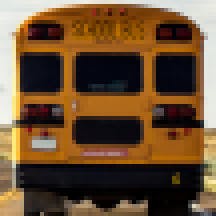More than a year after a national debate on which bathrooms transgender students in North Carolina should be able to use, sexuality and gender have remained contentious issues in public K-12 schools. Just last week, an Indiana educator resigned and parents in Fairfax, Va., led active protest during a school board meeting over proposed changes to the district sexual education policies.
Yet this resistance is nothing new, and in spite of the backlash, many district leaders are charting a path forward. They are designing policies and implementing new, tech-enhanced curriculum in the hopes of addressing issues of inclusion—from sexuality and gender identity to the emergence of non-traditional family types—in today’s public schools.
One of earliest districts to adopt such policies is St. Paul Public Schools in Minnesota. Since 1994, through the district’s Out for Equity program, the district has supported building what it calls “a safe and welcoming school environment” for LGBTQ students and staff. But in the last few years, they have added some technological upgrades to their work, building community spaces online and using survey data to design socially tolerant classrooms.
“There is a long history [at St. Paul Public Schools] of meeting the needs of students who are marginalized for their sexual orientation or gender identity,” explains Clark Hoelscher, a program specialist for Out for Equity, now housed in Saint Paul Public Schools’ Department of Equity.
Hoelscher notes that the program was initially started to address health issues, such as reducing instances and exposure to sexually transmitted infections, including HIV. “Since then it has grown with the understanding that helping young people be whole and healthy means attending to the social-emotional and community side as well,” continues Hoelscher.
The Equity Department now is working to build up online LGBTQ community spaces in tandem with physical ones. Providing students with iPads and low-cost wireless network options has enabled the district to build online communities more effectively. Currently, they utilize Schoology, a learning management system, to form groups of student leaders and to connect pupils with advisors.
“The advisors are not just using a physical gathering space, but they are also connecting students to resources and opportunities through their online environments,” says Hoelscher, adding that the platform can notify students about relevant events and scholarships.
Data, Belonging and Early Education
For Hoelscher, one of the more exciting developments has been in their work with elementary schools, where an organization called AMAZE has been piloting some unique social-emotional learning strategies.
“I would say it is the best social-emotional learning curriculum that I have seen,” exclaims Hoelscher. “It really builds students’ understanding of themselves in their various complex identities.” Additionally, Hoelscher adds, it gives teachers and students tools to combat stereotypes, bias and discrimination.
AMAZE is a nonprofit early education program created by parents, community members and educators to build knowledge and understandings about diverse populations through curricula, training, literature, videos and other mediums. Though it was originally founded on the idea of supporting lesbian and gay students, today the program has grown to include lessons and literature for a variety of different families. They partner with public schools to train teachers, design literature and supply curricula. It has been running for over 20 years.
“At first we got a lot of pushback, saying we couldn’t talk about gay and lesbian family members,” says AMAZE executive director, Nancy Michael. But she pushed back herself, arguing that understanding diverse family types, intersectionality, and complex identities was important to talk about.
“Silence gives the message that this is not normal or acceptable,” she says.
The goal, Michael says, is to build tolerance for people from diverse communities, and help students from those communities find a sense of belonging. Through their partnerships, they teach students about blended, divorced and multiracial families. They also talk about families separated by incarceration, foster care and immigration.
“You name the kind of diversity, lived experience or the identity and we have it in our curriculum,” Michael continues. “Kids get that ‘windows and mirrors’ approach. They get to see their lives and their identities in classroom material read by that very important person—the teacher.”
In addition to literature, videos and handmade dolls, the program recently launched an online survey tool called Classroom Dynamics that uses data to educate and connect students to one another. The pilot survey has expanded over the last three years and is currently in 24 St. Paul Public Schools. They hope to go district-wide in the near future.
In the Classroom Dynamics system, students answer questions such as “who are you friends with?” and “who would you like to be friends with?” Based on the student’s answers, teachers then get sociograms or charts that build a network, showing them the connections between students. The charts highlight isolated students, students who are standing up for other kids, existing friend groups, potential friendships, and kids who are mistreating other kids.
The tool is also designed to help curb bullying and help teachers notice warning signs. With collected data AMAZE trains teachers on activities and intervention strategies so they can more closely examine certain students to learn why they may be reacting with negative behaviors—whether they might be isolated, bullied or have some other unaddressed need. AMAZE also encourage teachers to group students in ways that help them form friendships with each other, which ultimately builds deeper connections between students their schools.
“Everything we do is based in research, and some of the research says that if kids don’t have connections with a least five people throughout the school year, their sense of belonging and connection to the school itself is very low,” Michael says. “Those are the kids you worry about dropping out,” Michael explains. “But if kids feel really connected to a teacher or a couple of other kids then we know there is a better reason for that kid to want to get up in the morning and come to school.”
Michael says she has seen first-hand how the facets of her program support students in different classrooms, including her own son’s. Last year, she partnered with her children’s teachers to read AMAZE literature in their classrooms. Her son’s third-grade teacher asked her to come in when a young boy (who she gave the pseudo name “Sam”) in the class completely shut down and began acting up after learning his parent were going through a divorce.
Michael read one of the books from the Divorce and Blended Families section to the class before asking the students to raise their hands if they knew anyone who went through a divorce or had a blended family. Then they had a class discussion about what those experiences were like.
“Pretty much every kid in the classroom raised their hands, and Sam’s eyes bugged out of his head,” explains Michael. “Sam didn’t say anything during the conversation, but my son came home later that night and said, ‘Did you know Sam’s mom and dad were getting a divorce?’ I said, ‘no, really?’ and he said, ‘Yeah, after you were there we went and had lunch and Sam told us. Madison told him her parents did too, Jerome told him and Liam told him,’ and all of a sudden Sam had a community of people he could talk to.”

Social-emotional skills support student achievement, but embedding SEL into the school day can be complex.
If you’re launching a new SEL program or enhancing an existing one, these tips will help you avoid common implementation mistakes.
Challenges and the Road Ahead
One of the most significant challenges the district faces in expanding these types of programs is with funding. Hoelscher notes that there are several great social awareness programs that St. Paul Public Schools might consider adopting if they had the funds to do it.
“These programs cost money. It costs money to train professionals. It costs money to get better materials, to take students on field trips, to provide social workers and counselors in schools, so there are those capacity challenges,” explains Hoelscher.
Hoelscher also says it is difficult to find materials for students who are not fluent in English, noting that some languages don’t have pronouns.
“I notice this most when I work with families of transgender students or students questioning their gender identity. When we are building a support plan and trying to figure out how to meet student needs we are often working with a family whose first language is not English,” Hoelscher continues, saying it’s important to carefully address these issues with translators to make sure the students, families and their cultures are respected.
Yet in spite of the challenges, Hoelscher has been encouraged by the district’s work, noting that for the first time in 2017 an item was adopted on the Minnesota Student Survey asking students if they identified as transgender. To Hoelscher, it’s a sign that the district is working to meet the needs of those students.
“When I started in at St. Paul Public Schools in 2014—this was before there was a gender inclusion policy—transgender students were leaving the schools… I was watching them transfer to charter schools and online schools, and they were not finishing,” Hoelscher explains.
“I have had far more questions this year about things like calling out the right name on the diploma than I did in the past. I believe that is because we have more students who are transgender finishing high school. That’s what this work is all about.”


